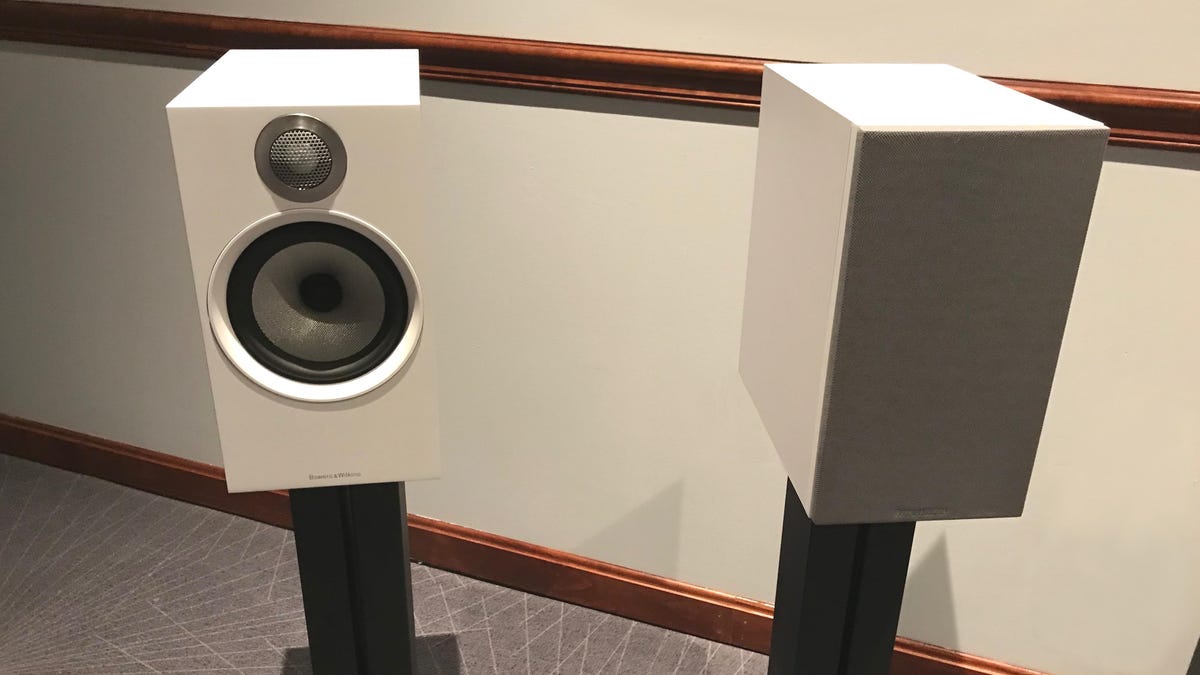Bowers & Wilkins ditches Kevlar with new 600 series speakers
B&W has made Kevlar speakers for more than 20 years, but its 600 models are the last to switch to the company's own Continuum material.

The Bowers & Wilkins 606 feature the new Continuum cones and will sell for $800 a pair.
New models of phones, laptops and televisions come out every year like clockwork, but loudspeakers can last a good four or five years before they're replaced. The Bowers & Wilkins 685 S2 debuted in 2014, and it took the company until now to make a change. And what a change it is.
B&W's Continuum material debuted with the 800 series in 2015 and the silvery speaker cones appeared in the 700 series last year. Now, in 2018 the "entry-level" 600 series has Continuum drivers at last.
Previously the company had used the iconic Kevlar material for its drivers, but the shift to its own proprietary material means B&W can keep tighter control on how its speakers are made. Additionally, the manufacturer says the material performs better than Kevlar when used in loudspeakers -- though there's no word on how bulletproof it is.
The new range incorporates four speakers with Continuum woofers: the 607 ($600, £400, AU$949) and 606 ($800, £550, AU$1,149) bookshelves, the 603 floorstanders ($1,800, £1,250, AU$2,699) and the HTM6 center ($599, £399, AU$799). All prices except for the center speaker are for pairs.
The 607 is the baby of the range, with a 5-inch Continuum cone as well as the 1-inch aluminum Decoupled Double Dome tweeter.
The 606, as the replacement for the 685 S2, will undoubtedly be the most popular speaker of the range. It incorporates the Decoupled Double Dome tweeter with a 6.5-inch Continuum cone.
The 603 features paper bass drivers.
The floorstanding 603 incorporates a Decoupled Double Dome tweeter, a Continuum midrange driver, and in a surprising turn: paper-cone bass drivers. Previously B&W floor standers used aluminum drivers, but many speaker designers are going back to paper.
The range is lacking a surround speaker or even fancy things like Atmos modules, but it does have a one-size-fits-all center speaker. The HTM6 offers the tweeter in addition to dual 5-inch Continuum cone mid/bass drivers.
The two finish choices are matte black or gloss white. It's worth noting that the speakers are all rear ported, but the Bowers & Wilkins representatives I spoke to said there's no real penalty and they will perform well with the bass reinforcement of a wall.
Subwoofers are carried across from the previous 600 Series updated with the new finishes: ASW610XP at $1,200 £800, AU$1,799; ASW610 at $650, £500, AU$999, and the ASW608 at $500, £400, AU$749.
The speakers will be available in the US and UK in September and in Australia in October.
I listened to the speakers at an event in Boston, which compared the new models to the old, and based on first impressions the new 600s were a lot brighter than the 68x. But what was also apparent was that the bass was a lot punchier than the old model. Bass power hasn't traditionally been a feature of the company's Kevlar speakers and so if B&W has never been "rock" enough for you, it might be worth checking out the new models.
One note on the apparent brightness I heard. In CNET's review of the 700 series we used the same Rotel gear that B&W chose for its demo, and we found it pretty bright-sounding. If you're interested in the 600 series, I'd suggest using something laid back to power them -- Marantz, Sony or even Denon. Of course I'll reserve judgement until I can hear the 600s in our lab.
It's worth noting that the price has increased from previous ranges, with a $100 jump from the 685 S2, which were a $50 premium on the 685 before them. Now that the 600 series is no longer the affordable speaker it once was, and given that budget speakers like Elac and Q Acoustics are filling the void, it seems that the time could be right to bring back the 300 series. It's not hard to imagine a budget 300 speaker with a Kevlar driver taking on Andrew Jones' Elac range at its own game.

